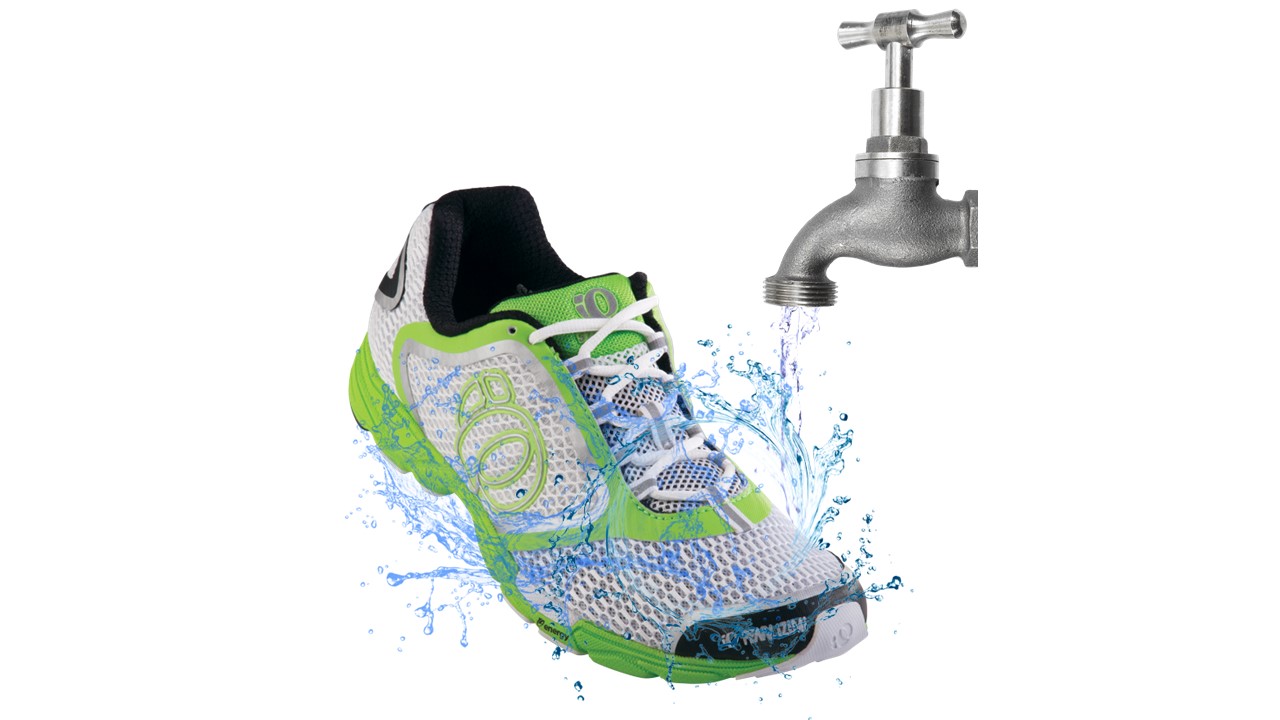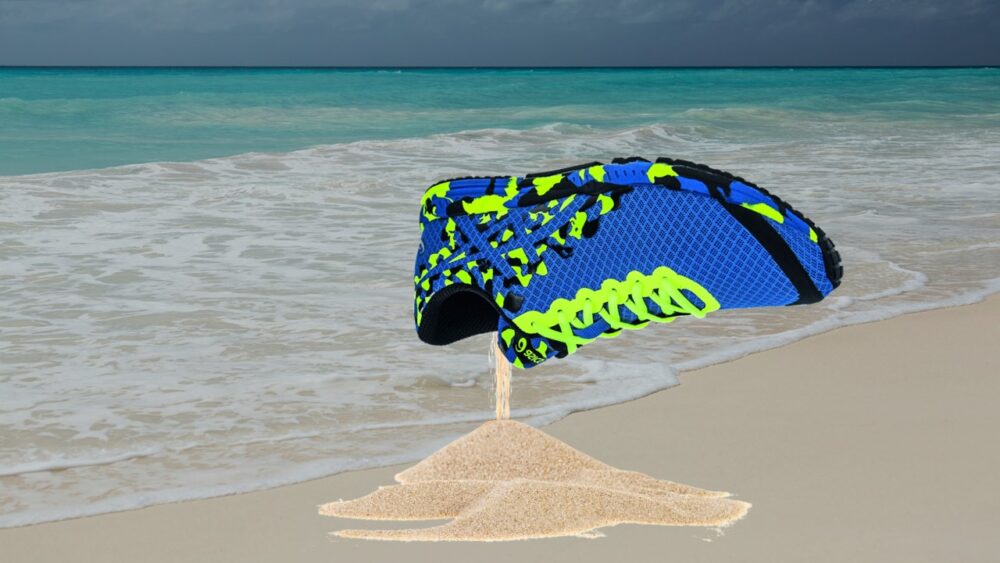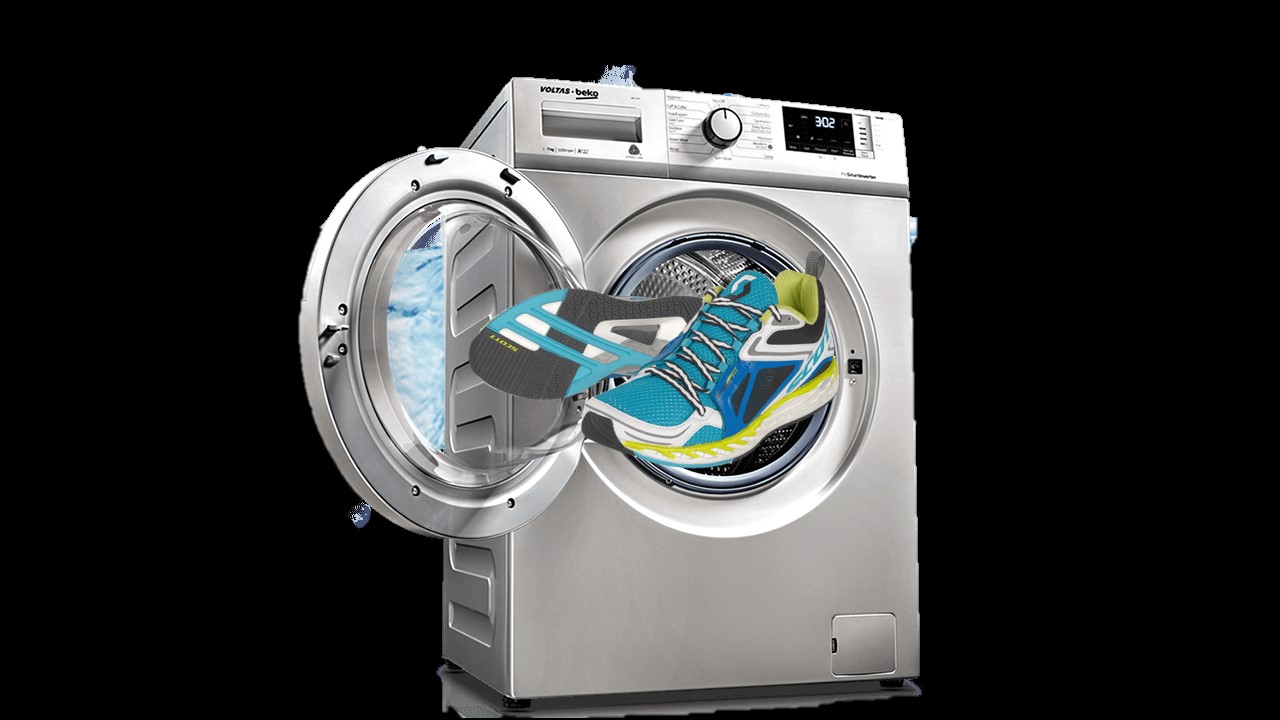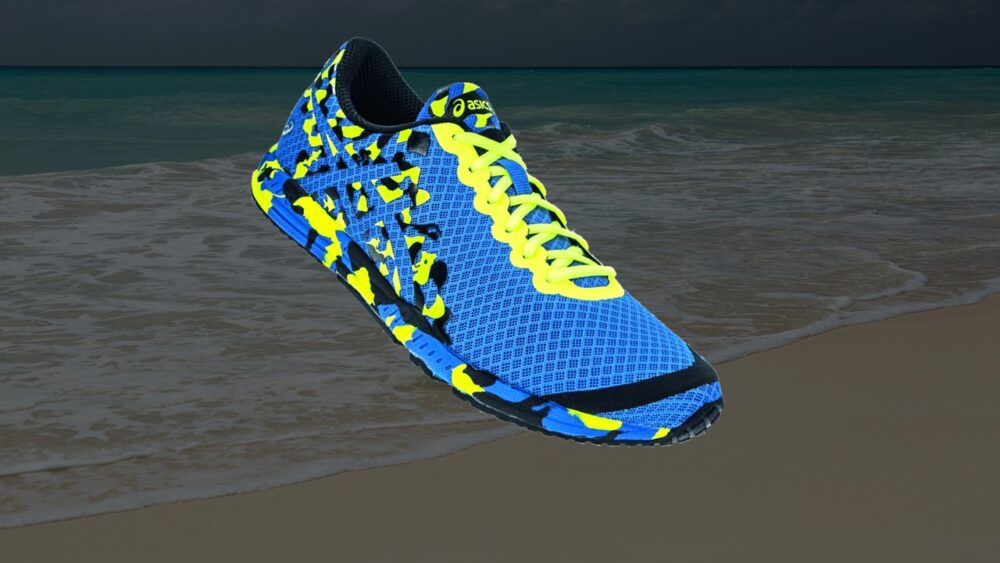How To Clean Water Shoes The Right Way
Water shoes are essential for water sports because they protect your feet but when they get dirty, they can attract bacteria and cause foot problems. So, it is important to know how to clean water shoes the right way and prevent them from smelling so bad.
You may have already known a few ways to clean your water shoes but you need to know how to clean water shoes the right way. Study shows that dirty water shoes attract more harmful bacteria that can cause not only foot problems but also respiratory problems, urinary tract infections and more.
This will give you a step-by-step guide on how to clean water shoes and get rid of that pesky odor. I will also give you tips on preventing your water shoes from smelling in the first place. So, if you are ready to learn how to clean your water shoes and keep them smelling fresh, then read on!
How To Clean Water Shoes Correctly?
If you wear your water shoes, they will get dirty. Even if you have bought the best water shoes, they will definitely get dirty and the most important thing is to know how to clean your shoes.
Since most water shoes get wet and do not dry quickly, you also need to be aware of bacteria building in the shoes.
Here are some of the best ways to clean your water shoes:
1. Easy And Quick Cleaning Of Water Shoes
I found this method the easiest way to clean your water shoes because it is really simple. You can use this method anywhere.
For instance, if you are away for water sports and you do not have a chance to go home to wash your water shoes, this is the best method for you.
Here is the step by step to follow to clean your water shoes:
What you need to clean your shoes:
- Water
- A bucket or trash can
- Soap
- Sponge
- Baking soda or white vinegar
- A towel or newspaper
- Storage bag
Step 1
Take the insole of your water shoes out. Get out as much sand as you can to make it easier for you to clean the shoes.
Step 2
Fill a bucket or trash can halfway with warm water. Rinse the shoes in the water to remove sand and other dirt in the shoes.
Step 3
Use a sponge and soap to clean the insole of the shoe. You can also use a sponge and soap to clean the inside of the shoes.
Step 4
Place the shoes and insoles inside the storage bag filled halfway with warm water. Add liquid soap and white vinegar or baking soda. Allow them to dissolve completely. Remove air from the bag and seal the bag.
Step 5
Shake the bag to make the soap and baking soda or white vinegar combine perfectly with the water. Leave the shoes in the bag for a few minutes.
Rinse the shoes and insoles with clean water. Repeat the process 3 to 4 times depending on how dirty your shoe is. Make sure no traces of soap and baking soda is found on the shoes.
Step 6
Clean the shoes and insoles with the towel and put the towel inside the shoes to absorb moisture so that your shoes can dry quickly. You may also put newspaper inside the shoe to absorb moisture.
Allow your shoe to dry in a well ventilated place and boom, your shoe is clean, odorless and ready for more water activities.
2. Clean Water Shoes Using Hand And Soap
Take off the water shoes once you get home. Rinse them with clean water for a few minutes. Make sure you remove the insole if it has one and rinse the insole separately.
Ensure sand on the insole and inside the shoes gets removed as you rinse the shoes.
Fill a bucket or sink with warm water and mix a small quantity of ACTIVE detergent or a mild soap with the water. Use your hand to dissolve the detergent in the water by swirling your hand in the water.
Place both the shoes and insoles inside the solution you mixed and rub them with your hands. If your shoes are smelling, you may want to add a tablespoon of baking soda or white vinegar to the mix to get out the smell.
Soak the shoes for a minimum of 15 minutes. Place a sponge in the soapy mixture and scrub your shoes and insoles with the sponge. Scrub the shoes inside and outside.
After scrubbing the shoes, rinse them under running water and make sure there are no traces of detergent on and inside the shoes.
Clean the shoes with a towel and insert the towel or newspaper inside the shoes to absorb moisture. Place them in a well ventilated area to dry completely. It is not advisable to dry your water shoes with heat to avoid damaging them.
3. Use A Washing Machine
When it comes to using a washing machine to clean your water shoes, you need to be cautious.
First, check and ensure your shoe is machine washable before you use this method to clean your water shoes. If your shoe is not machine washable, try other methods.
Take out the insole of your shoes if there is one. Rinse the shoes and insoles with hot water, making sure you get the sand inside the shoes and on the insoles out.
You can also soak them in the sink for a few minutes to remove sand and debris from the shoes.
Place the water shoes in a laundry bag. Do not wash the shoes with other items but you can add a few towels to maintain the weight balance.
Put it in the machine and add ACTIVE detergent or other types of soap that are not hot. You can also add baking soda or white vinegar.
Set your machine and run a delicate cycle. Retrieve the shoes and rinse them under running water to make sure there are no traces of soap.
Clean the shoe with a towel. Insert the towel in the shoes to soak up water so that the shoes can dry quickly. You can also use newspapers instead of towels.
Place the shoes in a well-ventilated area to dry. Do not place them directly under the sun and do not dry them with a dryer to avoid damaging your shoes. The newspaper or towel will help you speed up the drying process.
Types Of Water Shoes (How To Clean Water Shoes Correctly)
1. Aquatic Sports Shoes: Designed for water sports like kayaking, paddleboarding, and snorkeling. They often have a secure fit, quick-drying materials, and good traction.
2. Beach Water Shoes: Ideal for sandy beaches and shallow water. They are lightweight, breathable, and provide protection against sharp objects.
3. Water Hiking Shoes: Suitable for hiking in wet or muddy conditions. They have sturdy soles, water-resistant materials, and ankle support.
4. Water Sandals: A hybrid between sandals and water shoes. They are great for casual water activities and are easy to slip on and off.
5. Surfing Water Shoes: Specifically designed for surfing and other board sports. They offer a snug fit and often have features like drain holes and reinforced toe areas.
6. Boating Water Shoes: Intended for boating and sailing, they provide excellent grip on wet surfaces and are often made of quick-drying materials.

How To Clean Different Types Of Water Shoes
The cleaning method for water shoes depends on the materials used. Here’s how to clean different types of water shoes:
1. Mesh and Fabric Water Shoes
- Remove any loose dirt or debris by gently tapping the shoes together or using a soft brush.
- Create a mixture of mild soap or detergent with water.
- Dip a soft cloth or sponge into the soapy water and clean the shoes’ exterior, paying attention to areas with stains or dirt buildup.
- Rinse the shoes thoroughly with clean water to remove any soap residue.
- Stuff the shoes with crumpled paper towels or dry newspaper to help maintain their shape while drying.
- Allow the shoes to air dry in a well-ventilated area, avoiding direct sunlight or heat sources that could damage the materials.
2. Neoprene Water Shoes
- Rinse the neoprene shoes with fresh water immediately after use to remove salt and debris.
- For tougher stains or odors, use a mixture of mild detergent and water to spot clean the affected areas.
- Rinse the shoes thoroughly to remove soap or detergent residue.
- Gently squeeze out excess water and blot the shoes with a clean towel to speed up the drying process.
- Allow the neoprene water shoes to air dry, but avoid exposing them to direct sunlight, as it may cause the material to deteriorate over time.
3. Rubber Water Shoes
- Rinse off the rubber shoes with clean water to remove dirt and salt.
- Use a soft brush or cloth with mild soap or detergent to clean the shoes thoroughly.
- Rinse the shoes again to ensure all soap residue is gone.
- Pat the shoes dry with a clean towel.
- Allow the rubber water shoes to air dry in a cool, shaded area.
4. Leather Water Shoes
- Remove loose dirt and debris using a soft brush or cloth.
- Remove the insole if there is one and clean separately.
- Use a mixture of mild soap and water to clean the leather shoes, taking care not to oversaturate the leather.
- Wipe off excess soap with a damp cloth and rinse it out.
- Pat the shoes dry with a clean, dry towel.
- Allow the leather water shoes to air dry naturally, away from direct heat or sunlight.
Always follow the manufacturer’s cleaning instructions if available. Proper care and regular cleaning will help extend the life of your water shoes and keep them in good condition for your next aquatic adventure.
Tips to Avoid Damaging Water Shoes During Cleaning (How To Clean Water Shoes Correctly)
- Read Care Instructions: Always check the manufacturer’s care instructions and follow them carefully when cleaning your water shoes.
- Spot Test Cleaning Agents: Before applying any cleaning solution to the entire shoe, spot test it on a small, inconspicuous area to ensure it doesn’t cause any adverse reactions.
- Use Mild Soap or Detergent: Stick to mild soap or detergent and lukewarm water for most cleaning needs. These are gentle enough to clean the shoes effectively without causing damage.
- Hand Wash Gently: Opt for gentle hand washing instead of machine washing. Use a soft cloth or sponge to clean the shoes, and avoid aggressive scrubbing.
- Avoid Soaking in Hot Water: Rinse water shoes with cold or lukewarm water and avoid prolonged soaking to preserve their shape and integrity.
- Air Dry Naturally: Allow water shoes to air dry naturally in a well-ventilated area, away from direct heat sources. Stuff them with crumpled paper or towels to maintain their shape during drying.
- Clean Regularly: Clean your water shoes after each use or whenever they get visibly dirty to prevent dirt buildup and make the cleaning process more manageable.
- Address Stains Promptly: Tackle stains as soon as possible to prevent them from setting into the material and becoming more challenging to remove.

Dealing With Odor Issues In Water Shoes
Dealing with odor issues in water shoes is essential to maintain foot hygiene and ensure a pleasant wearing experience. There are so many ways of getting the water smell out of shoes. You can use essential oils such as Cedarwood, cloves and tea tree.
Here are some common odor problems associated with water shoes and effective solutions to combat them:
1. Cause of Odor: Bacteria and Fungus
Water shoes create a warm, moist environment ideal for bacteria and fungus to thrive, leading to unpleasant odors.
Solution
- Regular Cleaning: Clean your water shoes after each use with mild soap and water to remove bacteria and fungi.
- Rinse and Air Dry: Rinse the shoes with fresh water after use and allow them to air dry thoroughly to prevent moisture buildup.
- Baking Soda: Sprinkle baking soda inside the shoes to absorb moisture and neutralize odors. Leave it overnight and shake out the excess before wearing.
2. Cause of Odor: Accumulated Sweat and Dirt
Sweat and dirt can accumulate inside water shoes, leading to foul smells over time.
Solution
- Wash Feet Thoroughly: Before wearing water shoes, wash and thoroughly dry your feet to minimize sweat and odor inside the shoes.
- Wear Moisture-Wicking Socks: Consider wearing moisture-wicking socks with your water shoes to absorb sweat and reduce odor.
- Machine Washable Insoles: If your water shoes have removable insoles, check if they are machine washable and clean them regularly.
3. Cause of Odor: Dampness and Slow Drying
Water shoes that do not dry properly can develop a musty odor.
Solution
- Proper Drying: After each use, ensure your water shoes are completely dry before storing them. Use crumpled newspaper or a towel to absorb excess moisture.
- Rotate Use: If you have multiple pairs of water shoes, rotate their use to allow each pair to dry thoroughly between wears.
4. Cause of Odor: Fungal Growth
If your water shoes have been stored in a damp or humid environment, fungal growth may occur, leading to a strong odor.
Solution
- Sunlight Exposure: Let your water shoes dry in direct sunlight occasionally, as UV rays can help kill bacteria and fungi.
- Anti-Fungal Sprays: Use specialized anti-fungal sprays or powders inside the shoes to prevent fungal growth and eliminate odors.
5. Cause of Odor: Inadequate Cleaning
Infrequent or improper cleaning can allow odor-causing bacteria and debris to build up in the shoes.
Solution
- Regular Cleaning: Clean your water shoes after each use, following the proper cleaning methods for the specific material.
- Specialized Odor Eliminators: Use specialized odor eliminators designed for shoes to combat strong odors effectively.

Tips For Maintenance Between Uses (How To Clean Water Shoes Correctly)
Maintenance between uses is crucial for keeping water shoes clean and in good condition throughout trips and activities. Here are some valuable tips for maintaining water shoes between uses:
1. Rinse After Each Use: Rinse your water shoes with fresh water after each water-related activity to remove sand, salt, chlorine, or any other debris. This prevents these substances from settling into the material and causing damage over time.
2. Remove Insoles and Laces: If your water shoes have removable insoles or laces, take them out after each use. This allows both the shoes and the removable parts to dry thoroughly and prevents moisture buildup.
3. Dry Thoroughly: After rinsing, shake off excess water and allow your water shoes to air dry completely. Avoid putting them in a closed, damp bag or compartment, as this can lead to mildew or unpleasant odors.
4. Use a Towel: Pat your water shoes dry with a clean towel to speed up the drying process. Avoid wringing or twisting them, as this can cause damage to the materials.
5. Avoid Direct Heat: Never place your water shoes near direct heat sources such as radiators, heaters, or campfires. High heat can warp the materials and affect the shoe’s performance.
6. Store in a Ventilated Area: Between uses, store your water shoes in a well-ventilated area to allow air circulation. This helps to prevent moisture buildup and mold growth.
7. Use a Mesh Bag: Consider using a mesh bag to store your water shoes. A mesh bag allows for air circulation and helps keep your other belongings dry if the shoes are still slightly damp.
8. Protective Sprays: Apply a water-resistant or protective spray to your water shoes. These sprays create a barrier that repels water and stains, helping to keep your shoes cleaner and less prone to absorbing dirt and debris.
9. Avoid Walking in Mud: If possible, avoid walking in muddy areas with your water shoes. If you do encounter mud, rinse off the shoes as soon as possible to prevent it from sticking and drying on the shoes.
10. Wipe Down the Exterior: After each use, wipe down the exterior of your water shoes with a damp cloth to remove any visible dirt or stains. This simple step can help keep your shoes looking clean and fresh.
Common Problems With Water Shoes And How To Fix Them (How To Clean Water Shoes Correctly)
Water shoes, like any footwear, may encounter various problems over time. Here are some common problems with water shoes and how to fix them:
1. Odor Build-up
Cause: Bacteria and fungi can thrive in the moist environment of water shoes, leading to unpleasant odors.
Solution: To eliminate odors, wash the water shoes thoroughly using a mixture of mild soap and water. You can also try soaking them in a solution of white vinegar and water (1:1 ratio) for about 30 minutes before washing.
Additionally, using odor-absorbing insoles or placing dryer sheets inside the shoes when not in use can help keep them fresh.
2. Mold or Mildew Growth
Cause: If water shoes are not dried properly or stored in a damp environment, mold and mildew can grow on them.
Solution: Clean the affected areas with a mixture of white vinegar and water (1:1 ratio) or use a mild anti-fungal spray. Ensure the shoes are thoroughly dried after each use, and store them in a cool, dry place to prevent mold and mildew growth.
3. Loose Soles or Separated Glue
Cause: Over time, the adhesive holding the sole to the upper part of the water shoes may weaken, leading to loose soles.
Solution: Apply a strong adhesive designed for the specific materials of your water shoes to reattach the loose sole. Follow the manufacturer’s instructions and allow sufficient drying time before wearing the shoes again.
4. Worn Out Traction or Grip
Cause: Frequent use on rough surfaces or abrasive terrains can wear down the traction on the outsoles.
Solution: Depending on the extent of wear, consider replacing the water shoes with a new pair if the grip is severely compromised. Alternatively, you can use a shoe repair kit to add a layer of adhesive traction pads or grippers to the outsoles.
5. Rips or Tears
Cause: Sharp objects or rough use can cause tears or rips in the material of the water shoes.
Solution: Use a patch or repair kit specifically designed for the material of your water shoes to mend any tears. Reinforce the damaged area with the patch to prevent further tearing.
6. Color Fading
Cause: Prolonged exposure to sunlight or harsh cleaning agents may cause the color of the water shoes to fade.
Solution: Avoid leaving the shoes in direct sunlight for extended periods. Use mild cleaning solutions when washing the shoes, as harsh chemicals can contribute to color fading.
7. Elastic or Strap Issues
Cause: The elastic or straps on the water shoes can become stretched or damaged with frequent use.
Solution: Replace damaged or worn-out elastic or straps with new ones or seek the help of a professional shoe repair service to fix or reinforce them.
Tips For Storing Water Shoes (How To Clean Water Shoes Correctly)
Properly storing water shoes can help maintain their shape, prevent damage, and extend their lifespan. Here are some tips for storing water shoes:
1. Clean and Dry Thoroughly: Before storing water shoes, make sure they are clean and completely dry. Any moisture left inside the shoes can lead to mold, mildew, or unpleasant odors over time.
2. Air Dry Upside Down: After washing or rinsing your water shoes, turn them upside down to allow any remaining water to drain out. Leave them to air dry in a well-ventilated area, away from direct sunlight or heat sources, which can cause the shoes to warp or deteriorate.
3. Use a Shoe Rack or Shelf: Store your water shoes on a shoe rack or shelf to help them maintain their shape and prevent them from getting crushed or misshapen. Avoid storing heavy items on top of the shoes.
4. Avoid Sealed Containers: Do not store water shoes in sealed plastic bags or airtight containers. Trapping moisture inside can lead to mold growth and unpleasant odors.
5. Keep Away from Extreme Temperatures: Avoid storing water shoes in areas with extreme temperatures, such as hot attics or cold basements. Extreme temperatures can damage the materials and adhesives used in the shoes.
6. Stuff with Newspaper or Tissue Paper: If your water shoes have a soft upper or need support to maintain their shape, stuff them with crumpled newspaper or tissue paper while storing. This will help them keep their form and prevent creasing.
7. Separate from Wet Gear: If you have other wet gear or swimwear, avoid storing them together with water shoes. Keep them in separate compartments or bags to prevent any moisture transfer.
8. Check for Critters: Before storing water shoes for an extended period, inspect them for any signs of insects or critters that might have taken shelter inside. Remove any unwanted guests before storing the shoes away.
9. Rotate Use: If you have multiple pairs of water shoes, try rotating their use. This allows each pair to fully dry between uses, reducing the risk of mold or mildew development.
10. Store in a Mesh Bag: Consider storing water shoes in a breathable mesh bag or a shoe bag with ventilation. This allows air circulation and prevents any lingering moisture from causing problems.
11. Keep them Handy: If you use water shoes regularly, it’s convenient to keep them near the door or in a dedicated bag, so you can easily access them when needed.
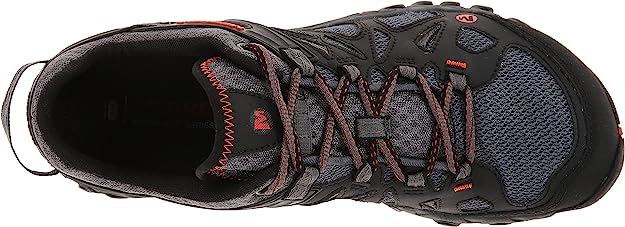
Benefits of Keeping Water Shoes Clean (How To Clean Water Shoes Correctly)
Keeping water shoes clean is essential for several reasons, and it goes beyond just aesthetics. Here are some key benefits of maintaining clean water shoes:
1. Preventing Bacterial Growth
Water shoes are designed to be worn in wet and damp environments, making them susceptible to bacterial and fungal growth. Bacteria thrive in moist conditions, and when water shoes are not cleaned regularly, they can become a breeding ground for harmful microorganisms.
Cleaning the shoes helps eliminate dirt, sweat, and other organic materials that bacteria feed on, reducing the risk of skin infections and foot-related issues.
2. Ensuring Foot Hygiene
Dirty water shoes can lead to foot odor and discomfort. Sweat and moisture trapped inside the shoes can create an unpleasant smell and cause foot-related problems like athlete’s foot. By keeping water shoes clean and dry, you promote better foot hygiene and overall foot health.
3. Extending Shoe Life
Regular cleaning and proper maintenance can significantly extend the lifespan of water shoes. Sand, salt, and dirt particles can be abrasive and wear down the materials, affecting the shoe’s overall durability.
By removing these particles through cleaning, you help preserve the shoe’s integrity and functionality, allowing you to enjoy them for a more extended period.
4. Maintaining Traction and Performance
Clean water shoes offer better traction and performance during water-related activities. A build-up of dirt or debris on the outsoles can reduce grip and increase the risk of slipping on wet or slippery surfaces.
Keeping the soles clean can ensure optimal performance and safety during water sports and activities.
5. Enhancing Comfort
Clean water shoes are more comfortable to wear. Sand, pebbles, and other debris trapped inside the shoes can cause discomfort and irritation to the feet. Removing these particles through cleaning ensures a more pleasant and comfortable experience while wearing water shoes.
6. Preventing Color Fading and Material Damage
Proper cleaning can help prevent color fading and material damage in water shoes. Prolonged exposure to saltwater, chlorine, and other harsh elements can degrade the shoe’s materials and cause color fading.
Cleaning after each use helps remove these corrosive substances, preserving the shoe’s appearance and integrity.
7. Avoiding Skin Irritation
Unclean water shoes can harbor allergens and irritants that may cause skin reactions. By cleaning the shoes, you reduce the likelihood of skin irritation or allergic reactions caused by contact with dirt and contaminants.
Common Mistakes To Avoid When Cleaning Water Shoes (How To Clean Water Shoes Correctly)
- Using Harsh Chemicals: One common mistake is using harsh chemicals, bleach, or strong detergents to clean water shoes. These can damage the materials, weaken adhesives, and compromise the shoe’s performance and appearance.
- Hot Water Soaking: Soaking water shoes in hot water or leaving them in direct sunlight can cause materials like rubber and neoprene to warp or lose their shape.
- Scrubbing Too Hard: Scrubbing water shoes too vigorously with abrasive brushes or pads can wear down the material and affect the shoe’s structural integrity.
- Using High Heat to Dry: Using a hairdryer, radiator, or any direct heat source to dry water shoes quickly can lead to shrinkage or damage to the shoe’s components.
- Neglecting to Rinse Thoroughly: Failing to rinse off soap or cleaning agents completely can leave residue on the shoes, leading to discomfort and potential material damage.
- Machine Washing: Machine washing water shoes can be too rough on the materials and cause them to tear or become misshapen.
- Ignoring Manufacturer Guidelines: Not following the manufacturer’s cleaning instructions can lead to unintended consequences, such as voiding warranties or damaging the shoes.
The Best And Easiest Water Shoes To Clean
Product Image | Product Name | Key Features | Rating | Price |
| ||||
| ||||
| ||||
| ||||
| ||||
| ||||
| ||||
| ||||
| ||||
|
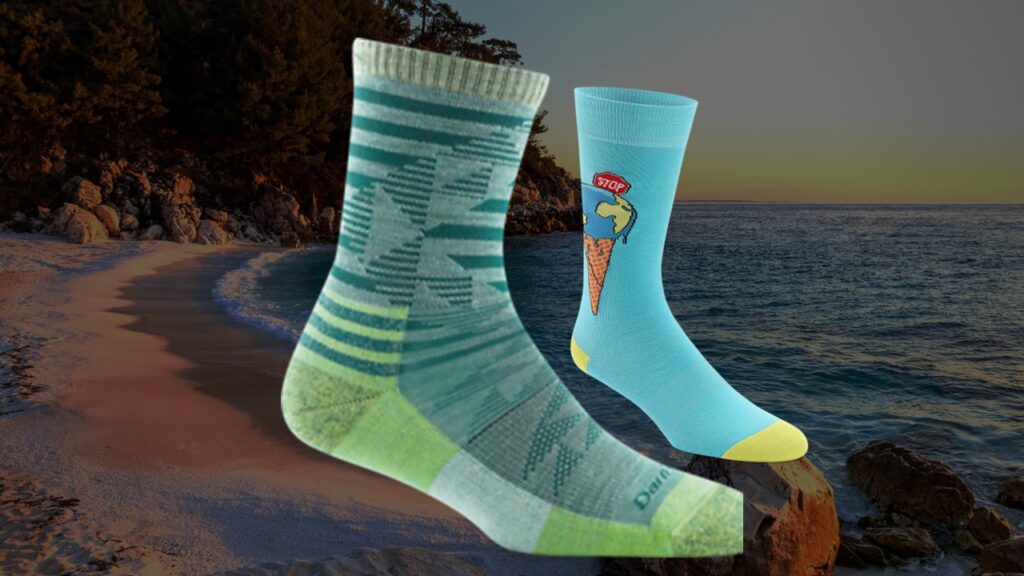
How To Clean Water Socks (How To Clean Water Shoes Correctly)
You can wash your water socks with water and soap or use a washing machine.
1. Wash By Hand
To wash your water socks with your hand, you need to turn them inside out and rinse them with clean water. Fill a bucket or sink with warm water and add ACTIVE detergent or dish soap. You can also add baking soda.
Agitate the water and when the soap bubbles have formed, put your socks inside. Swirl the socks in the water for a few minutes and then leave for 10 minutes.
Scrub the socks gently with a soft-bristle brush. Pay more attention to the outer part of the shoe. Then rinse the socks under running water. Do not leave traces of soap on the socks. You can rinse them for as long as you want to ensure they are thoroughly rinsed.
Clean the socks with a towel and hang them upside down in the shower to dry. You can also put them in a well ventilated area to dry. Do not place them under direct sun or use a dryer to dry them to avoid damaging them.
2. Wash With A Washing Machine
First, check to confirm that your water socks are machine washable. Rinse your water socks in clean water. Turn the socks inside out and place them in a garment bag to minimize friction in the washing machine.
Load the socks in the washer and add ACTIVE detergent or mild soap. You can also add baking soda or white vinegar to get the smell out of them. Set your washer to gentle and make sure to use cold water.
Once the cycle is complete take the socks out and rinse them to remove traces of soap. Hang them in the shower to dry after cleaning them with a towel. You can also dry them in a well ventilated area, not under heat.
How To Dry Water Shoes (How To Clean Water Shoes Correctly)
Once you finish washing your water shoes, you should dry them. If you want to dry it quickly, put a towel or newspaper inside the shoes to soak up the water inside.
Put the shoes in a well ventilated area and allow fresh air to dry them. It is important to avoid using a dryer or heat on your water shoes to prevent them from damage. Using heat to dry it can cause the shoe to shrink or melt.
Can You Put Water Shoes In The Dryer (How To Clean Water Shoes Correctly)
No. Do not put your water shoes in a dryer if you want to prolong the lifespan of the shoes. Using heat on your shoes can damage them. Heat can shrink or melt them which is why it is important to dry them in a well ventilated area rather than using heat.
If you want the shoes to dry quickly, you may want to insert some newspapers in them to soak up the water in them or just insert a towel to soak the water up. This will make your water shoes dry quickly in the air.
RELATED: Best Sports Water Bottles – Perfect For Everyone
How To Get Sand Out Of Water Shoes (How To Clean Water Shoes Correctly)
Getting sand out of your water shoes can be a huge task sometimes, but it is not a huge task. First, remove the insole of the shoes because sand can get under the insole and disturb your feet even after removing the sand.
Rinse off the insoles to make sure the insole is clean. Then try the following methods to get sound out of the shoe:
- Beat the shoes by smacking the sole together to dislodge the sand inside them. Turn the shoes upside down to get sand out of them.
- You can use a pressure hose to blast sand out of your water shoes. The pressure hose will help dislodge the sand and blast stubborn sand.
- Put the shoe in a bucket filled to half with water and swirl them around in the water to dislodge the sand. Dump out the water and repeat until your shoe is clean.
- A hand vacuum can also work wonders when it comes to getting sand out of your shoes. Some hand vacuums are powerful enough to suck out sand from your shoes.
- Put some baby powder, talcum or cornstarch inside the shoes and use a rag to massage the inside of the shoe. The sand will be dislodged and you can get it out easily.
Wet Shoes Smell Bad (How To Clean Water Shoes Correctly)
Wet shoes smell bad because of the bacteria that grow in them. When your shoes get wet, the moisture creates a perfect environment for bacteria to grow. These bacteria release waste products that cause an unpleasant smell.
You can prevent wet shoes from smelling bad by letting them dry completely before wearing them again. You can also try sprinkling baking soda in your shoes to absorb moisture and kill bacteria. Also, whenever you use your shoes, try to always leave them in a well ventilated place in your home.
FAQs For How To Clean Water Shoes Correctly
1. How Often Should I Clean My Water Shoes?
It’s recommended to clean your water shoes after each use, especially if they are exposed to water, sand, or mud. Regular cleaning prevents dirt buildup, odor, and bacterial growth.
2. Can I Machine Wash My Water Shoes?
It’s generally not advisable to machine wash water shoes, as it can damage the materials and affect their performance. Hand washing with mild soap and water is a safer and more effective cleaning method.
3. Can I Use Bleach To Clean My Water Shoes?
No, using bleach or harsh chemicals can damage the materials and weaken the shoe’s construction. Stick to gentle cleaning agents like mild soap or detergents.
4. How Do I Remove Stubborn Stains From My Water Shoes?
For stubborn stains, spot clean the affected areas using a soft brush or cloth with a mixture of mild soap and water. Avoid scrubbing too hard to prevent material damage.
5. Can I Dry My Water Shoes In A Dryer?
It’s not recommended to dry water shoes in a dryer or expose them to direct heat sources. Air dry them in a well-ventilated area to preserve their shape and avoid damage.
6. How Do I Prevent Odor In My Water Shoes?
Rinse your water shoes after each use and allow them to air dry thoroughly. Use moisture-wicking socks and sprinkle baking soda inside the shoes to absorb moisture and neutralize odors.
7. Are All Water Shoes Machine Washable?
Not all water shoes are machine washable. Check the manufacturer’s care instructions to determine if your shoes are safe to machine wash.
8. Can I Wear Water Shoes Without Socks?
Yes, water shoes are designed to be worn without socks. However, wearing moisture-wicking socks can help absorb sweat and reduce odor.
9. Can I Use A Hairdryer To Dry My Water Shoes Faster?
It’s best to avoid using a hairdryer or any direct heat source to dry water shoes. High heat can damage the materials and affect the shoe’s performance.
10. How Do I Clean Water Shoes With Mesh Fabric?
Clean mesh water shoes using mild soap or detergent and a soft brush. Rinse thoroughly and allow them to air dry to prevent damage.
11. Can I Store My Wet Water Shoes In A Sealed Plastic Bag?
It’s not advisable to store wet water shoes in a sealed plastic bag. Moisture trapped inside can lead to mold or mildew growth. Instead, allow them to air dry before storing in a well-ventilated area.
12. How Do I Get Rid Of Mold In My Water Shoes?
Clean the affected areas with a mixture of vinegar and water or use a mild anti-fungal spray. Allow the shoes to dry thoroughly to prevent further mold growth.
13. Can I Use A Dishwasher To Clean Water Shoes?
Using a dishwasher to clean water shoes is not recommended, as the high heat and detergents used in dishwashers can damage the materials.
14. Can I Use Regular Soap To Clean Neoprene Water Shoes?
Yes, you can use regular soap to clean neoprene water shoes. Dilute mild soap or detergent in water and gently scrub the shoes for effective cleaning.
15. How Can I Maintain The Grip On The Outsoles Of My Water Shoes?
Regularly clean the outsoles of your water shoes to remove dirt and debris that may affect grip. Consider adding adhesive traction pads or grippers if the outsoles are wearing down.
The Bottom Line On How To Clean Water Shoes Correctly
If you are looking for how to clean water shoes correctly, it is important to always clean your water shoes after each use. This will help prevent the growth of bacteria and fungi, which can cause skin infections.
Cleaning your water shoes is quick and easy, and only takes a few minutes. Simply remove the shoes and rinse them with clean water. Then, use mild soap to clean the shoes, being sure to scrub the soles and seams. Rinse the shoes again and allow them to air.










